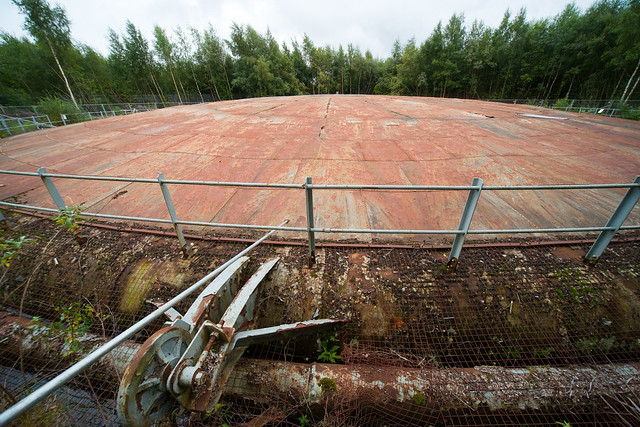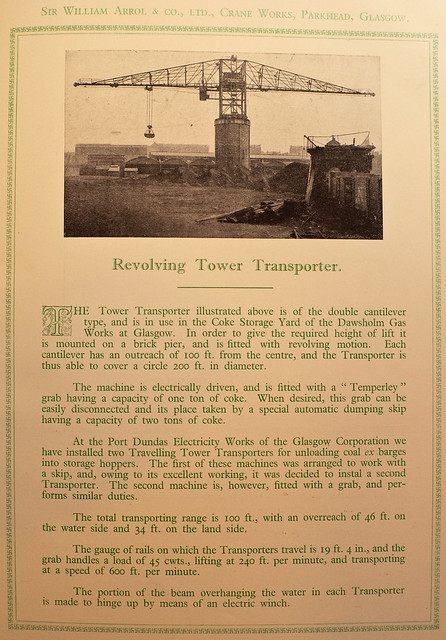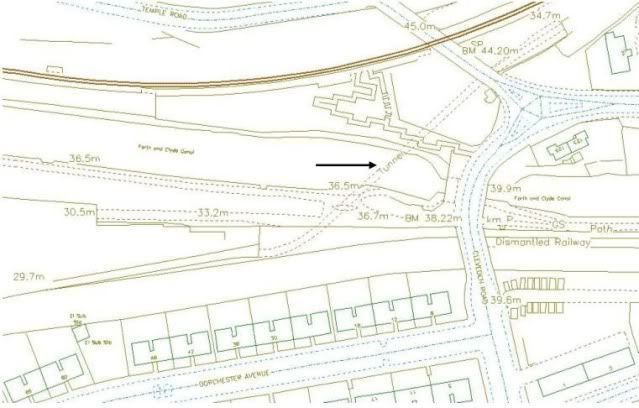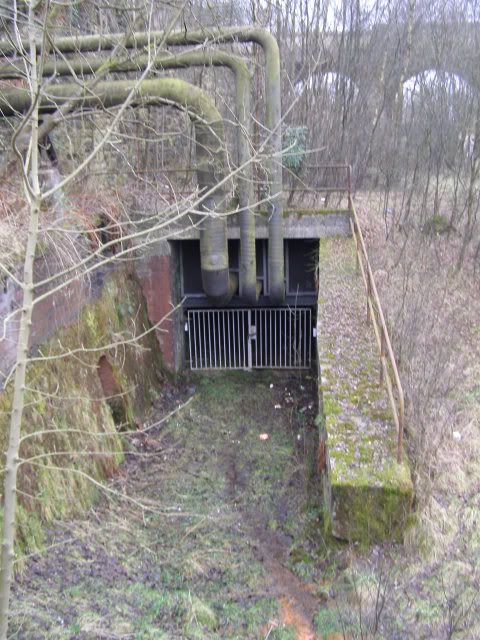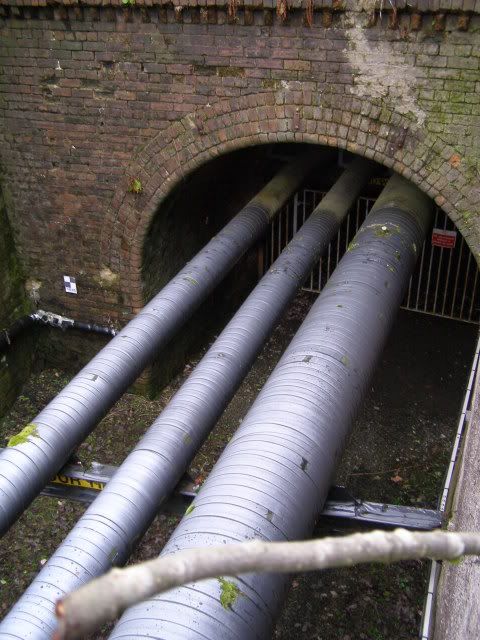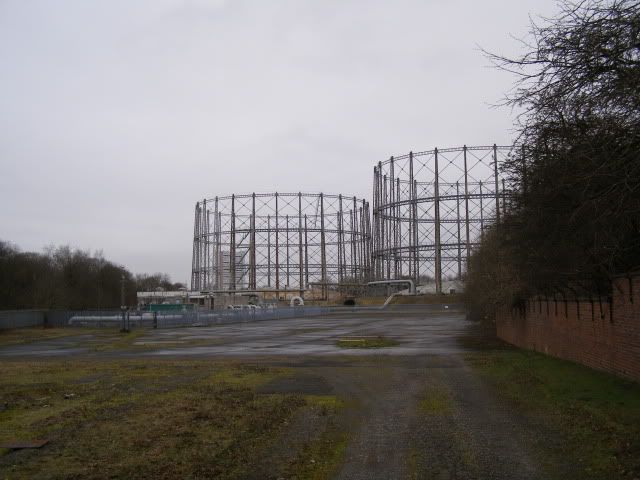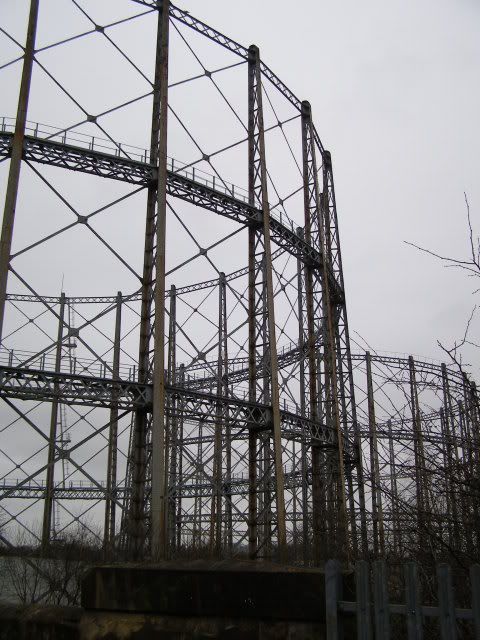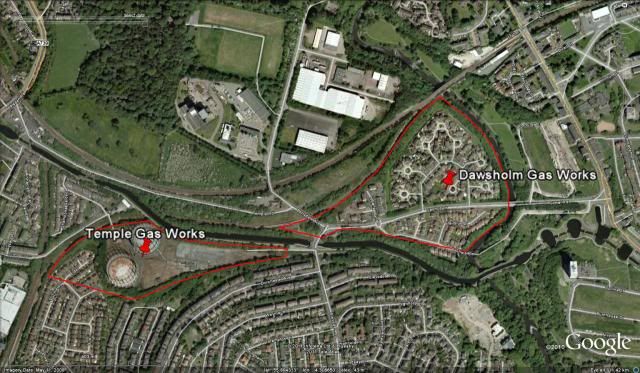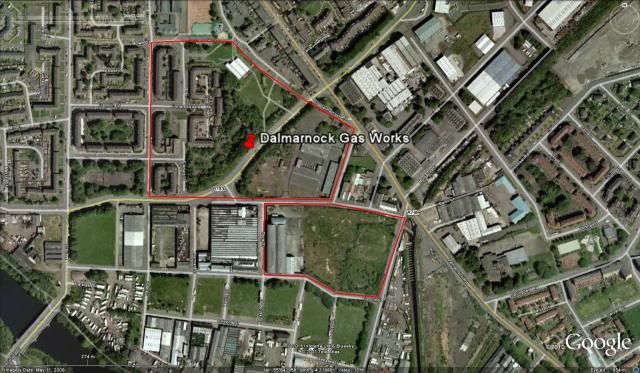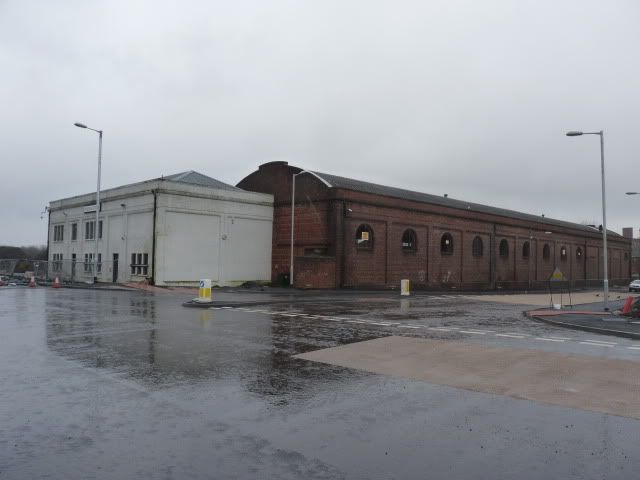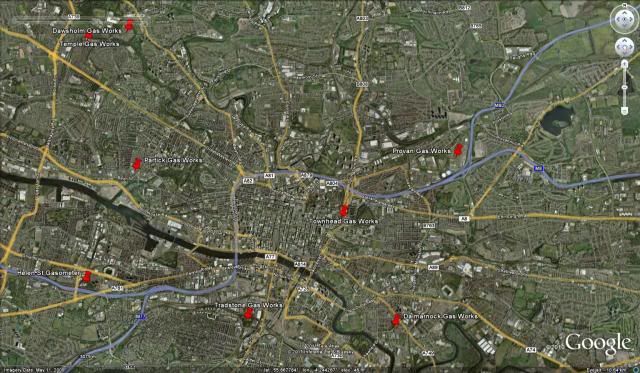
In 1817 an act of parliament was obtained by the Glasgow Gas Light Company giving statutory powers for producing "inflammable air" and other products from coal. Townhead was selected for Glasgow’s first significant gas works with the site being just west of the Cathedral. Any trace of it has long gone with the site cleared at the end of the 19th century and the area having been redeveloped twice in the intervening years
Tradeston Gas Works was erected by the Glasgow Gas Light Company in 1835 and expanded several times, it was taken over by the Glasgow Corporation in 1869 and eventually closed in 1970. The site still retains some function as part of the grid and the bases of two of the gas holders can be seen on GE.
http://canmore.rcahms.gov.uk/en/site/44 ... +gasworks/
Partick Gas Works was erected by the Glasgow Gas Light Company in 1843 at the bottom of Byres Rd, closed in 1879, nothing now remains of the site.
http://canmore.rcahms.gov.uk/en/site/15 ... gas+works/
In 1843 an act of Parliament was obtained by the City and Suburban Gas Company of Glasgow, giving statutory powers to supply gas to the City, Gorbals, Anderston, Calton, Rutherglen and places adjacent. A site was selected in Dalmarnock and work started on erecting the plant, it was taken over by the Glasgow Corporation in 1869 and eventually closed in 1956. Some of the buildings still remain and the outlines of two of the gas holders can be seen on GE.
http://canmore.rcahms.gov.uk/en/site/45 ... +gasworks/
Temple Gas Works was built in 1871 by The Partick, Hillhead and Maryhill Gas Company, it was taken over by the Glasgow Corporation in 1891 and joined to the nearby Dawsholm site by a tunnel under the canal to form a single works. The site closed in 1968 however the two large Temple gasholders are still in situ having been used until quite recently.
http://canmore.rcahms.gov.uk/en/site/44 ... +gasworks/
Dawsholm Gas Works was built in 1871 by Glasgow Corporation and was extended several times, along with being joined to the Temple works, a large chemical plant utilising by products was also situated on the site. The site was eventually closed in 1968 and is now a site of a modern housing development.
http://canmore.rcahms.gov.uk/en/site/44 ... +gasworks/
Provan Gas Works was built in 1904 by Glasgow Corporation and was extended several times, becoming one of the largest in Britain, a large chemical plant utilising by products was also situated on the site. The site was eventually closed in 1980s however it still retains some function as part of the grid and three large holders are still in use, the rest of the site has been largely cleared but has not been developed and can be seen on GE.
http://canmore.rcahms.gov.uk/en/site/45 ... +gasworks/
Helen Street Gas Holder Station, in 1949 a spiral guided gas holder and a boosting station was erected, this was remotely controlled from Tradeston Works. I believe it is still in use for storage.
http://canmore.rcahms.gov.uk/en/site/44 ... +gasworks/
Towns or coal gas (as opposed to Natural gas or North Sea gas) was basically made by roasting coal and collecting the mixture of hydrogen, methane and carbon monoxide, this process was carried out in retorts and along with the gas produced by-products of coke and coal tars and ammonia. The tars and ammonia were an important feedstock for the dye and chemical industry which often had associated plants on the gas works sites.
A second process which could utilise the coke produced in the retorts, was known as blue or carburetted water gas process. Here charges of coke were alternatively heated with air then cooled by a steam stream during which hydrogen and carbon monoxide was produced and collected.
Glasgow’s gas plants also used coke oven gas from various iron works and methane from colliers, this was then blended with what had been produced by the various processes in the works to produce a consistent product which could be stored in the various gas holders and distributed across the city.
Surprisingly, although most of the physical plant associated with gas manufacture has disappeared, much remains of the sites and the gas holders, some of which are still utilised as part of the modern distribution process.
I’m going to try and visit some of these sites over the coming weeks and hopefully get some photos of any remains, if any of you have any photos or info on the sites it would be great to see them.



